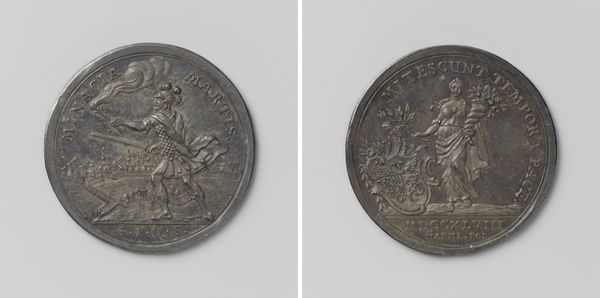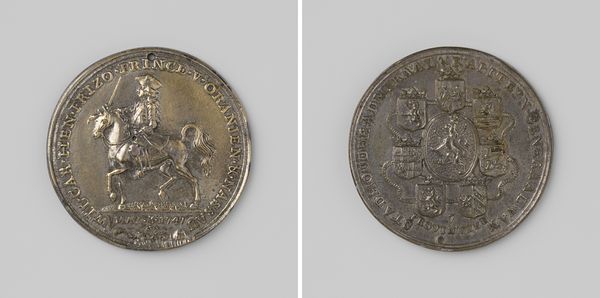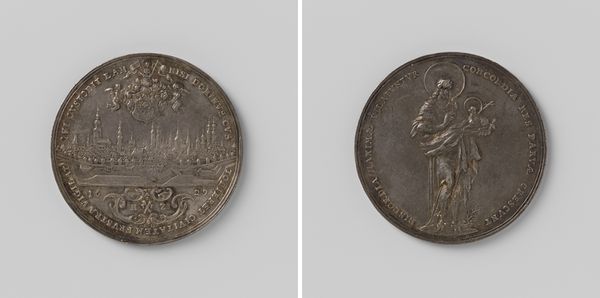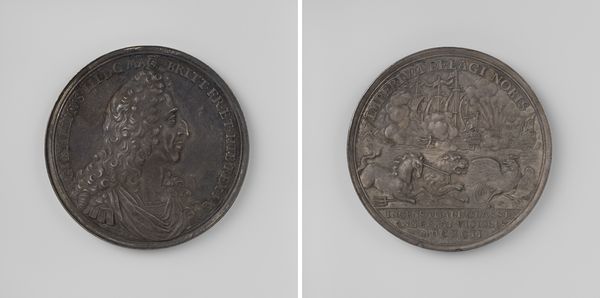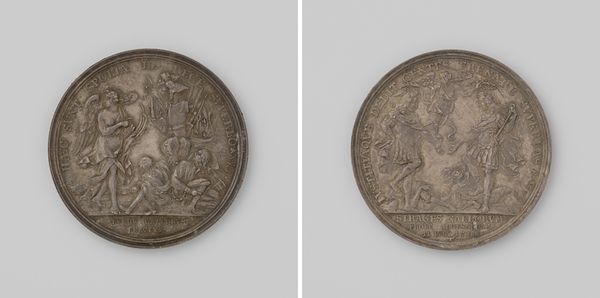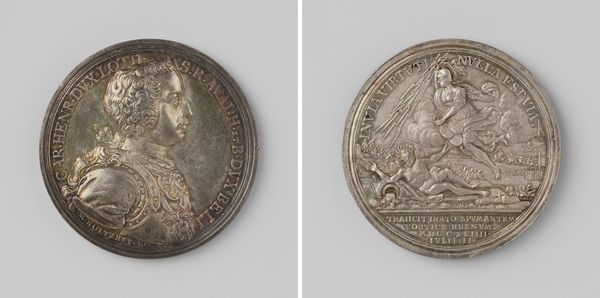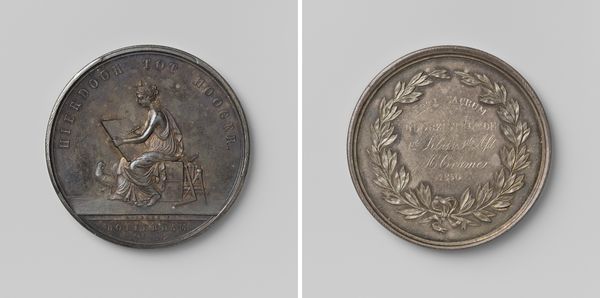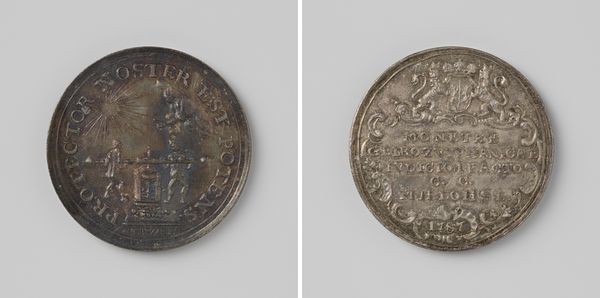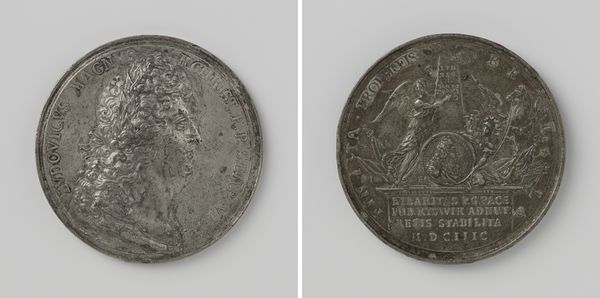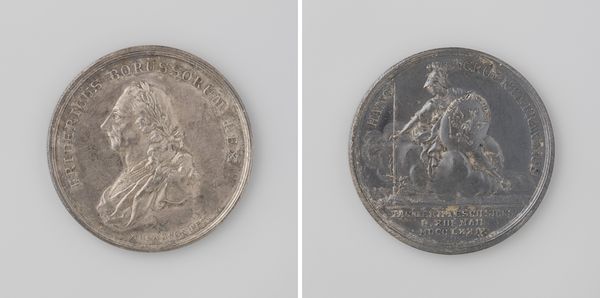
silver, relief, sculpture
#
medal
#
silver
#
dutch-golden-age
#
sculpture
#
relief
#
sculpture
Dimensions: diameter 5.7 cm, weight 36.92 gr
Copyright: Rijks Museum: Open Domain
Editor: So, here we have "Slag op het Slaak," the Battle of Slaak, a silver relief medal crafted in 1631 by Anthonis Pietersz. van der Willigen. The detail is astounding. It seems to capture this triumphant historical moment… But honestly, I'm a little lost in the specifics. What stands out to you most in this piece? Curator: Lost, are we? Heh, join the club! These little historical treasures are often puzzles. What jumps out to me is the duality – you have the strong leader, perhaps Prince Maurice, on one side, powerful on his steed overlooking his city, while the other shows chaotic battle unfolding, a swarm of ships caught in conflict. Editor: Duality, interesting. I see that now, this opposition... One side, order, leadership; the other, well, total war! Why represent it this way? Curator: Precisely! Consider the context. The Dutch Golden Age. It's about national identity, maritime power, and of course, political jostling. The medal becomes a potent propaganda tool. Almost like an early, portable newsreel! Look closely at that leader's face, that inscription... It's a curated narrative designed to evoke pride and, more importantly, loyalty. And look closely at the waves on the war scene, which way are they going, and what would this mean in the Golden age? Editor: Ah, it's shaping public opinion! So it’s less about accurate documentation, and more about shaping perception, creating a symbol. What a responsibility and opportunity for Van der Willigen. Curator: Exactly! Every ripple, every tiny soldier, every inscription nuance plays a part in that construction. What will you do with that as editor? Editor: This was helpful. Thank you! I see this now as less of a historical record and more as crafted messaging. The artist used both sides of this work of art to construct an idealized version of leadership and legacy in the war. Now I understand how critical details, like even the water’s currents, might be significant for cultural memory and for communicating value at the time.
Comments
No comments
Be the first to comment and join the conversation on the ultimate creative platform.
